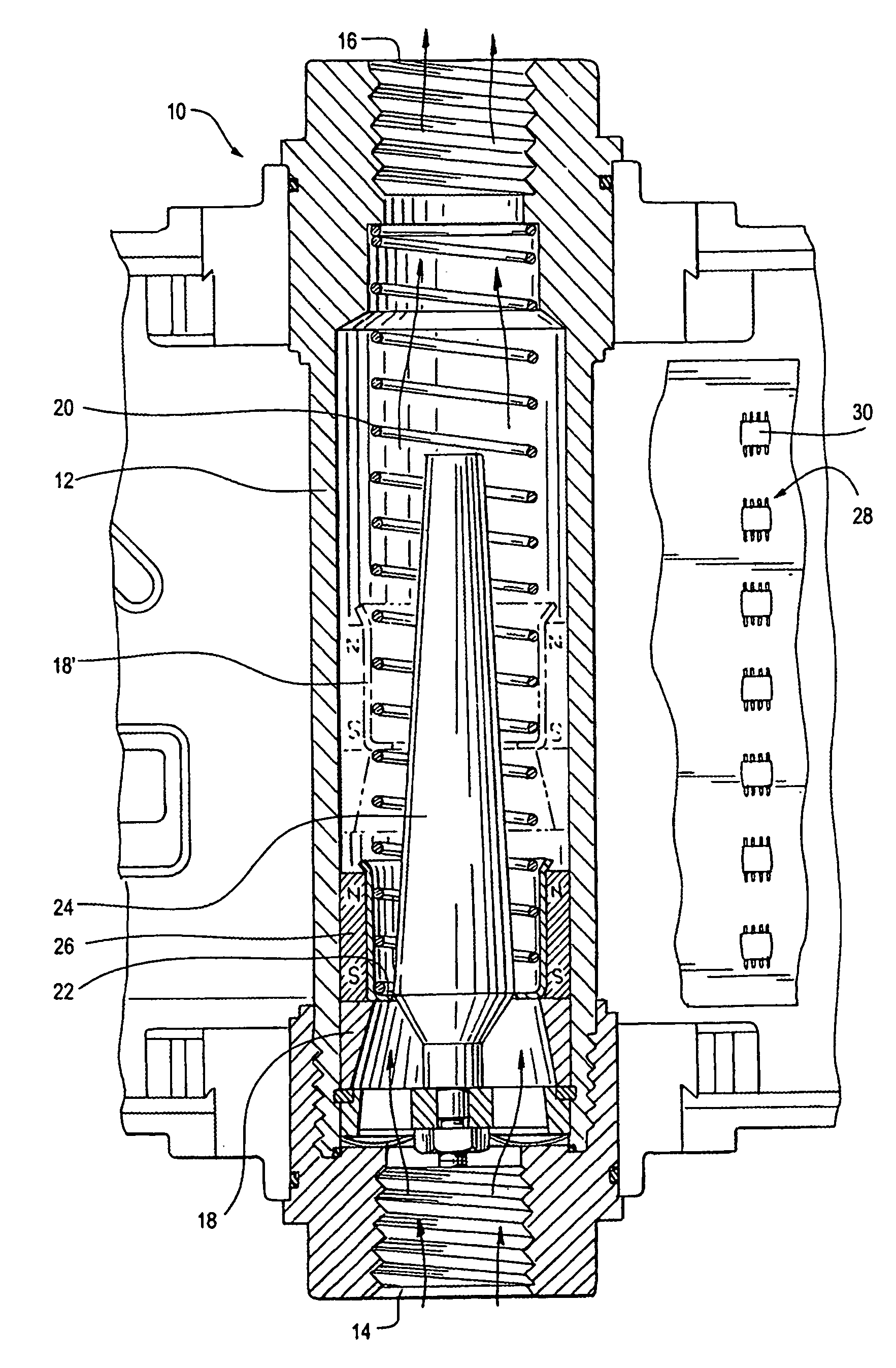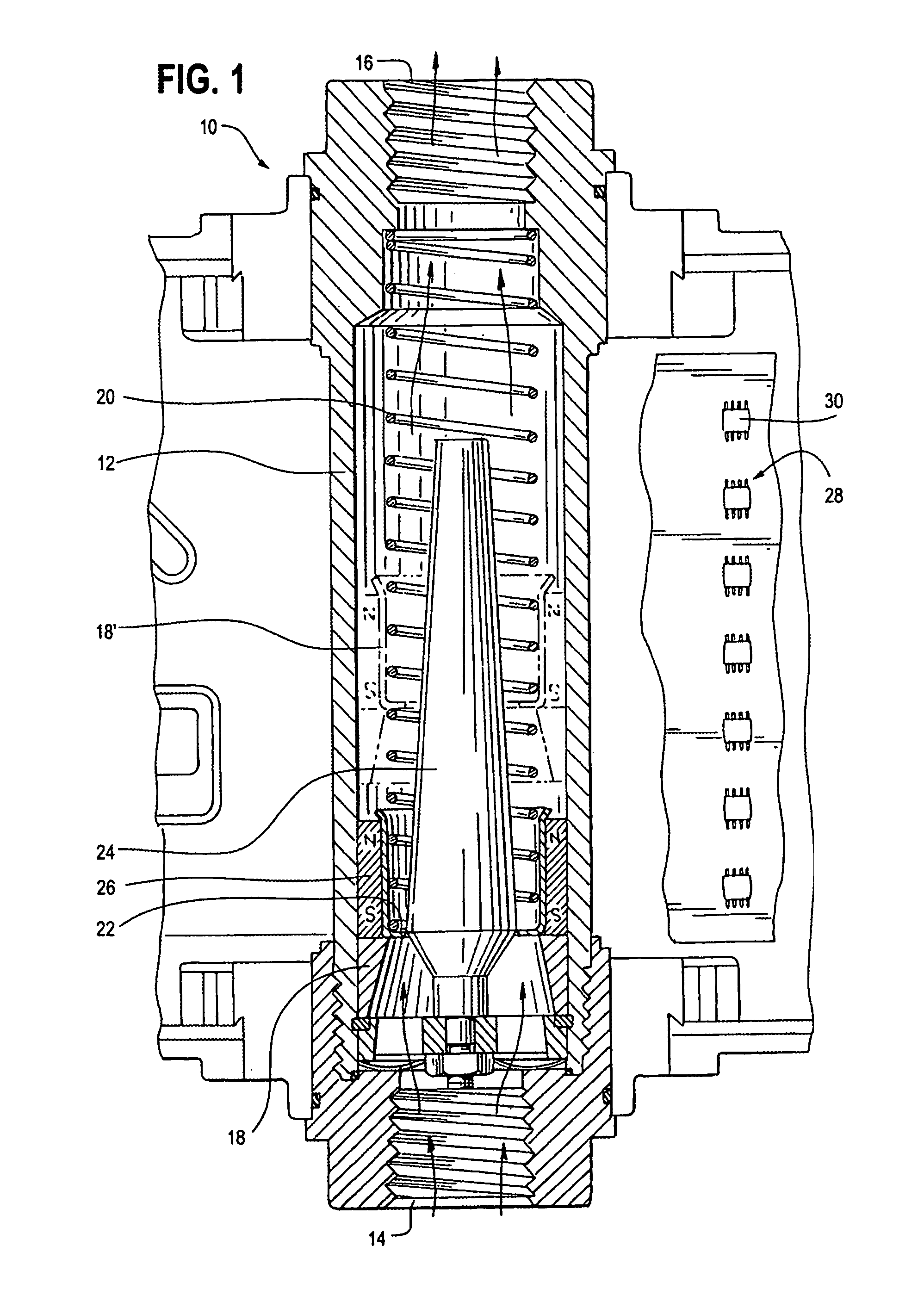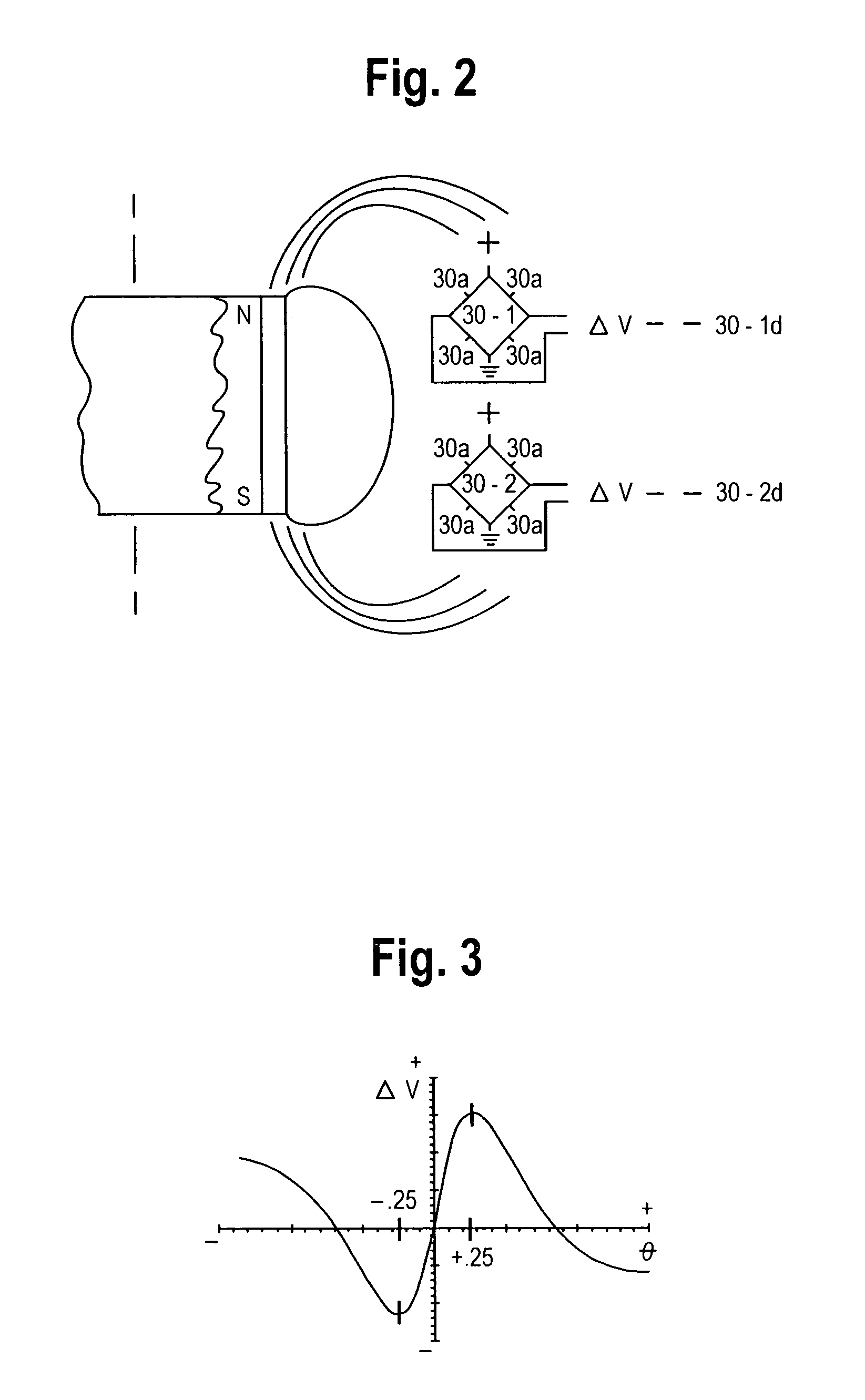Flow meter with magnetoresistive sensors and method of measuring flow
a flow meter and magnetoresistive technology, applied in the direction of instruments, liquid/fluent solid measurement, volume/mass flow by differential pressure, etc., can solve problems such as unbalance output related to bridges, and achieve the effect of eliminating potential decoupling
- Summary
- Abstract
- Description
- Claims
- Application Information
AI Technical Summary
Benefits of technology
Problems solved by technology
Method used
Image
Examples
Embodiment Construction
[0021]A variable area of flow meter 10, of the type shown in Hedland U.S. Pat. No. 3,805,611, is illustrated in FIG. 1. Cylindrical body 12, of a non-magnetic material, has an inlet 14 and an outlet 16. A piston 18 is biased toward the inlet by spring 20. The piston has a central opening 22 through which a conical plug 24 extends. Fluid flow through the body 12 creates a differential pressure across piston 18 which lifts the piston to a position at which the differential pressure balances the spring force as shown in broken lines at 18′. A magnet 26 is carried on piston 18 and has a field which extends outside cylindrical body 12. The position of magnet 26 and thus of the piston is sensed by an array 28 of MR sensors 30, providing signals from which flow rate of a fluid through the meter may be determined.
[0022]A preferred sensor 30 is a bridge circuit of four MR elements, as Honeywell type HMC 1501. Magnet 26 and two sensors 30-1, 30-2 are illustrated in FIG. 2. The four MR element...
PUM
 Login to View More
Login to View More Abstract
Description
Claims
Application Information
 Login to View More
Login to View More - R&D
- Intellectual Property
- Life Sciences
- Materials
- Tech Scout
- Unparalleled Data Quality
- Higher Quality Content
- 60% Fewer Hallucinations
Browse by: Latest US Patents, China's latest patents, Technical Efficacy Thesaurus, Application Domain, Technology Topic, Popular Technical Reports.
© 2025 PatSnap. All rights reserved.Legal|Privacy policy|Modern Slavery Act Transparency Statement|Sitemap|About US| Contact US: help@patsnap.com



